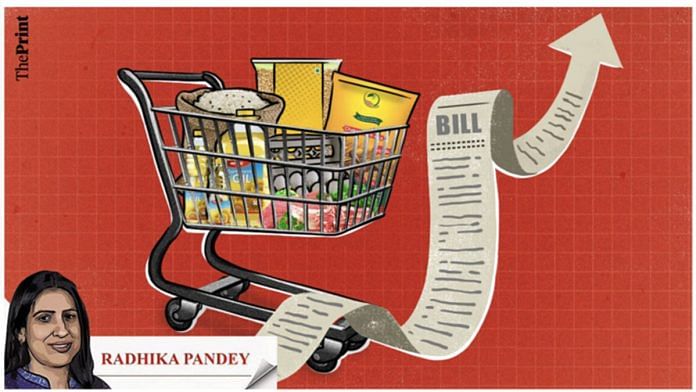After hitting a four-month low of 4.87 percent in October, 2023 retail inflation measured by the Consumer Price Index (CPI) spiked to 5.55 percent in November. Rural inflation continued to surpass urban inflation in November — a trend seen since July 2023. The reversal of the declining trend in inflation was driven by a combination of an unfavourable base effect and elevated food prices.
Food inflation rose to 8.7 percent in November after showing a declining trend in the previous three months. The surge in food prices was driven by double-digit inflation in cereals (10.27 percent), pulses (20.23 percent), vegetables (17.70 percent), fruits (10.95 percent) and spices (21.55 percent).
Core inflation (CPI excluding food group and fuel and light group) has continued to inch southwards in this financial year and is now closer to the medium target of 4 percent. On the other hand, the non-core inflation which clubs the food and fuel group rebounded to 7.26 percent in November from 5.56 percent in October.
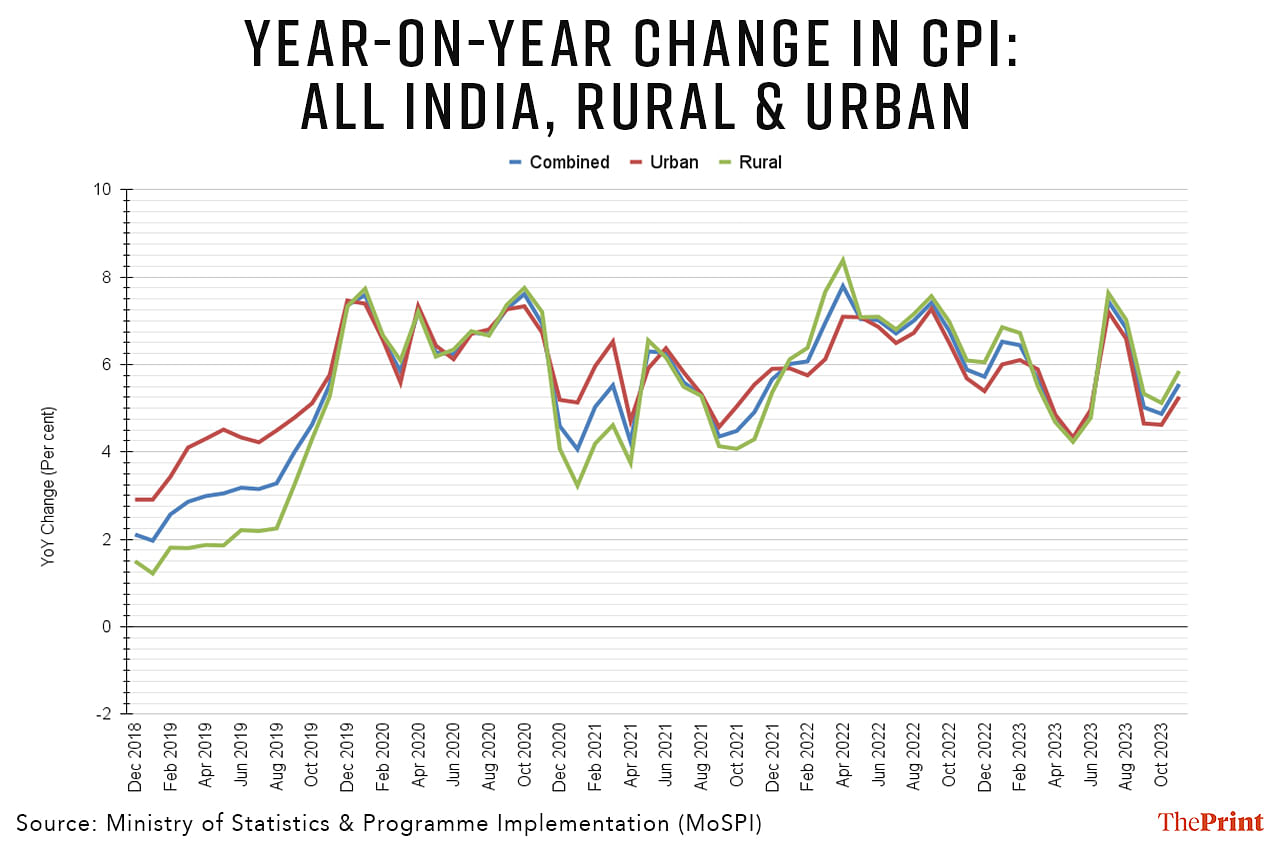
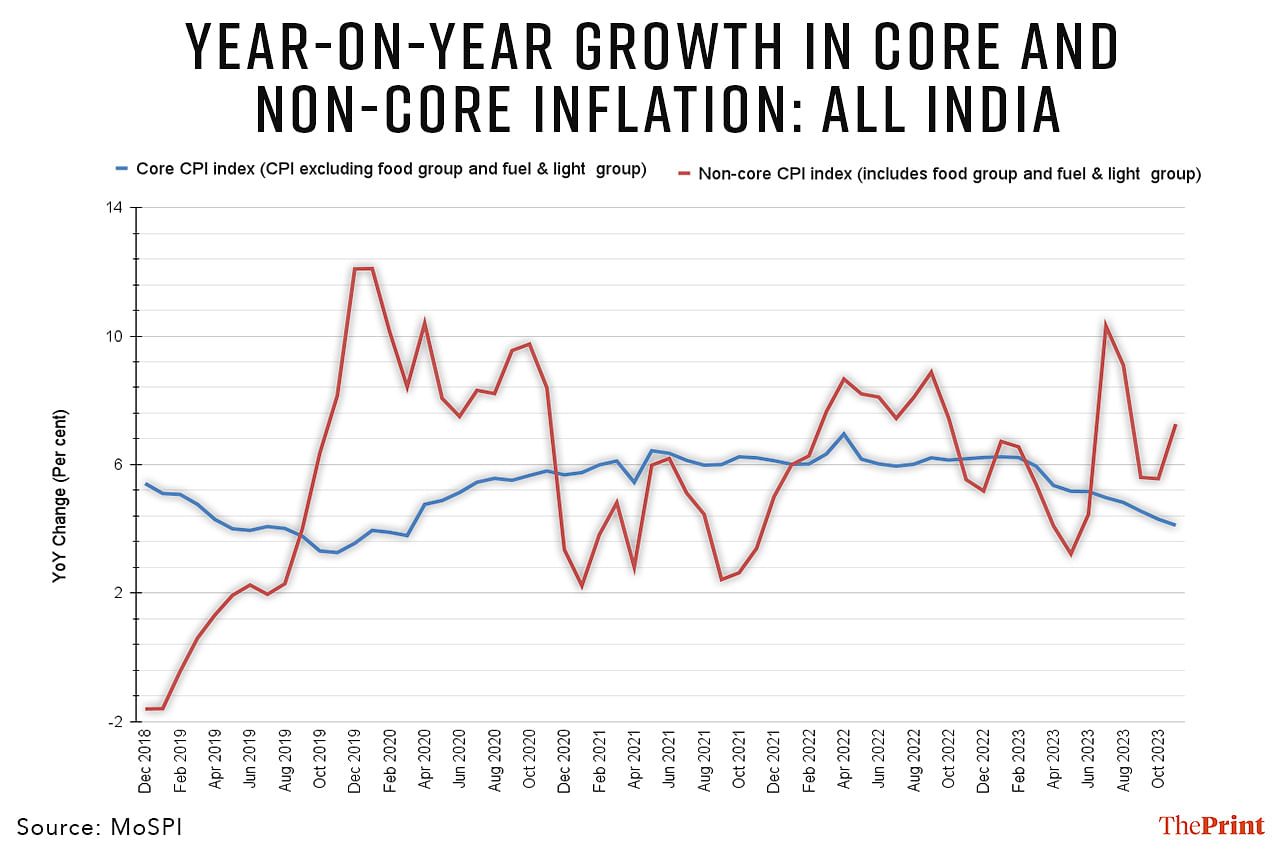
Also read: Lower October tax revenue growth & higher spending as 2024 polls near could strain govt finances
Base effect and sequential rise in prices
In November, 2022, the period that served as the base for the calculation of last month’s inflation, the CPI index number had declined by 0.1 percent month-on-month. This was partially responsible for the resurgence in inflation last month.
To avoid the confounding impact of the unfavourable base, it is useful to look at the month-on-month changes (for example, the change in November 2023 over October 2023), but most of the macroeconomic time series are obscured by seasonality, i.e. variations that occur at specific regular intervals in a year.
Seasonal adjustment removes the seasonal fluctuations and allows the calculation of month-on-month (or more generally, point-on-point growth rates). This allows a better understanding of the latest data. We apply standard seasonal adjustment procedures to adjust the CPI series for seasonality and then compute the month-on-month growth rates.
The general price index posted a sequential (month-on-month) increase of 0.7 percent in November as against a 0.2 percent increase in October. This is the highest month-on-month jump since July 2023. The sequential increase in the general index is driven by a 0.7 percent increase in food and beverages component.
The sequential increase in other components viz: Pan tobacco and intoxicants, clothing and footwear, housing and fuel and light was subdued at 0.2-0.3 percent, similar to the increase seen in October. The Miscellaneous component, however, saw a sequential uptick in index from 0.2 percent in October to 0.4 percent in November.
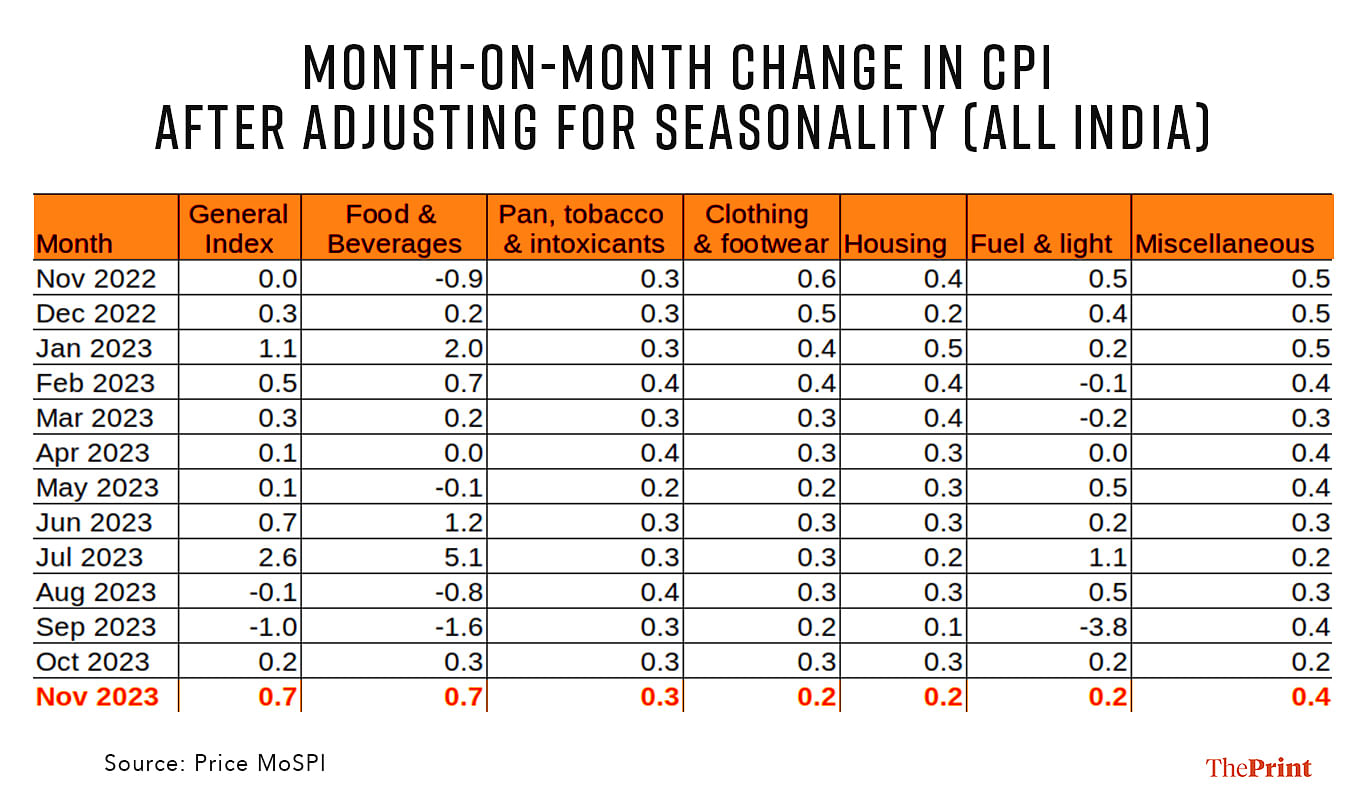
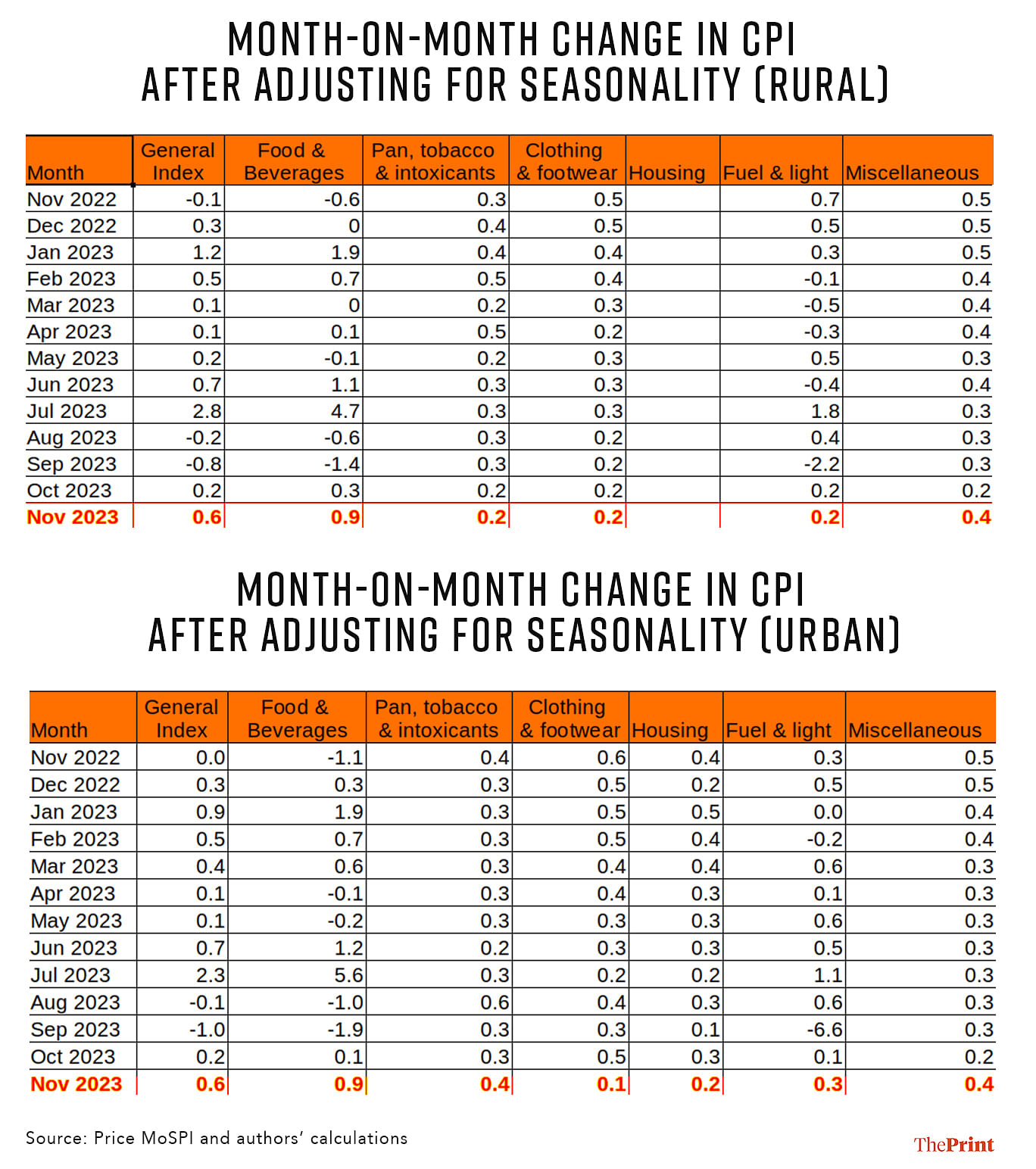
The food and beverage index posted a month-on-month (m-o-m) increase of 0.9 percent in rural and urban regions-a significant jump from 0.3 percent m-o-m increase in October. In simple terms, the momentum in November inflation was on account of higher food prices, which witnessed a jump in November as compared to October.
States inflation also saw a rebound in November
More states saw elevated inflation in November as compared to the previous month. In October, 11 states experienced inflation of more than 5 percent. In November, 18 states witnessed inflation above 5 percent. Manipur, Odisha and Rajasthan had the highest inflation of 11.63 percent, 7.65 percent and 6.99 percent respectively. In Punjab, Telangana and Gujarat, inflation jumped by more than 1 percent in November. The spike in inflation has been due to higher food prices.
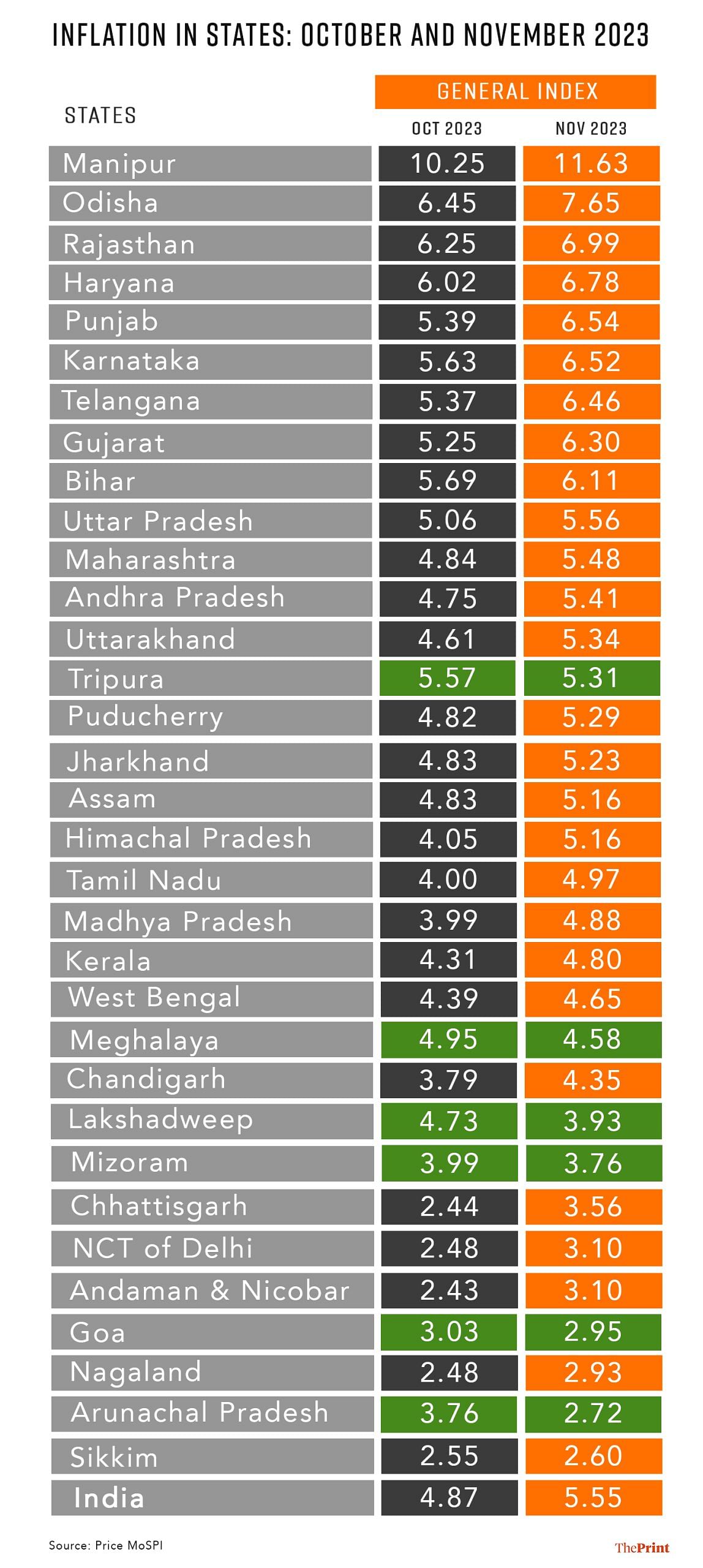
Food price moderation in sight?
Food constitutes roughly 39 percent of the overall CPI. The Food group in the CPI covers 114 items spread over 6 sub-groups. The Price Monitoring Division (PMD) in the Department of Consumer Affairs under the Ministry of Consumer Affairs monitors retail and wholesale prices, and spot and future prices of 22 essential commodities on a daily basis.
Analysis of this daily data gives useful insights into the possible trajectory of monthly food inflation which comes with a lag of 12 days.
Excluding ‘tea’, there are 21 commodities which account for roughly 23 percent of the overall CPI and nearly 58 percent of the CPI food. The price movement for the 11 days of December shows an easing of onion, potato and tomato prices as compared to November. But prices of wheat, rice, tur dal, urad dal continue to pose a worry. Price of sugar has rebounded in recent months and does not show sign of moderation in the early days of December.
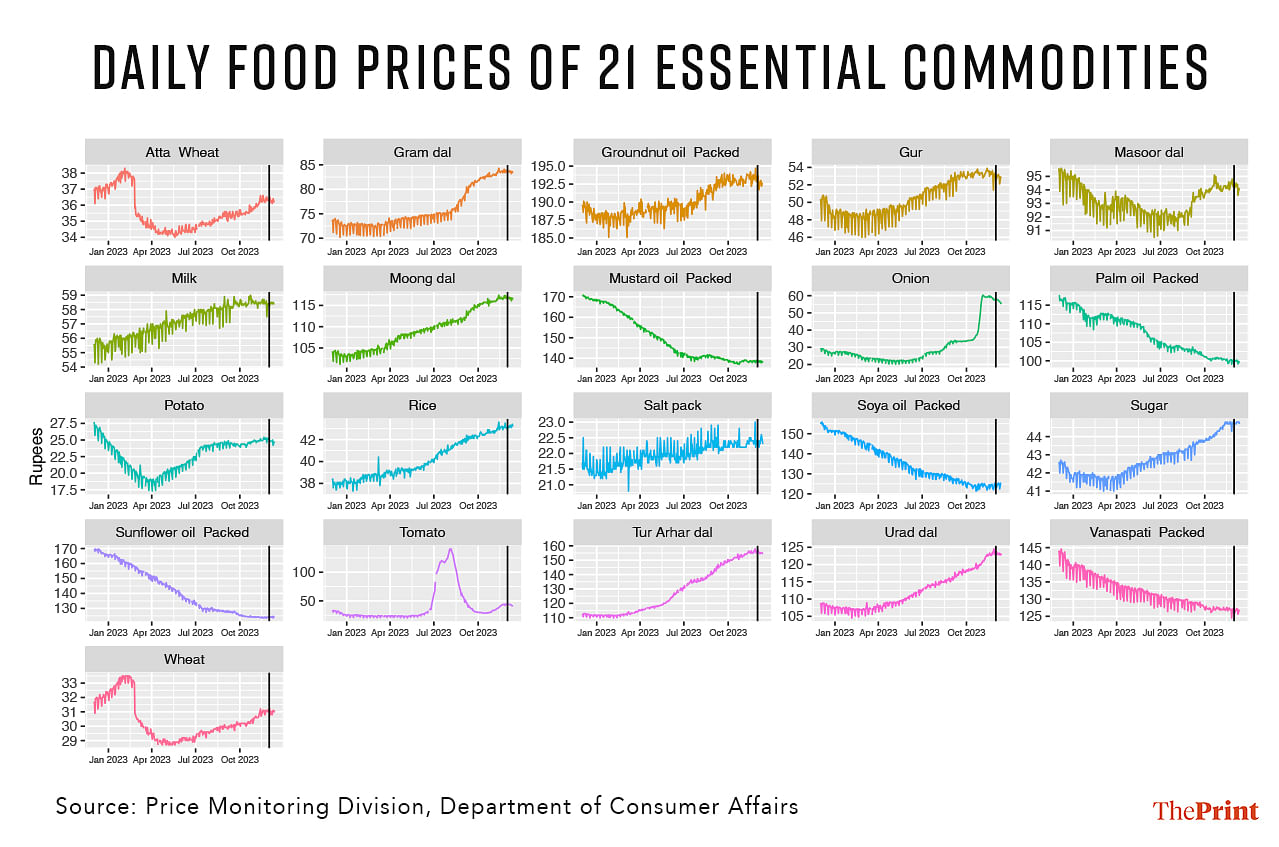
Food price index constructed using the prices of these 21 commodities can be a useful measure to assess early trends of food inflation. The figure below shows that while it may not match in magnitude, in terms of direction, the food price index capturing the daily prices of 21 commodities is seen to closely co-move with CPI food inflation.
The constructed food price index using the prices available till 11 December shows that food inflation will continue its upward trend in December.
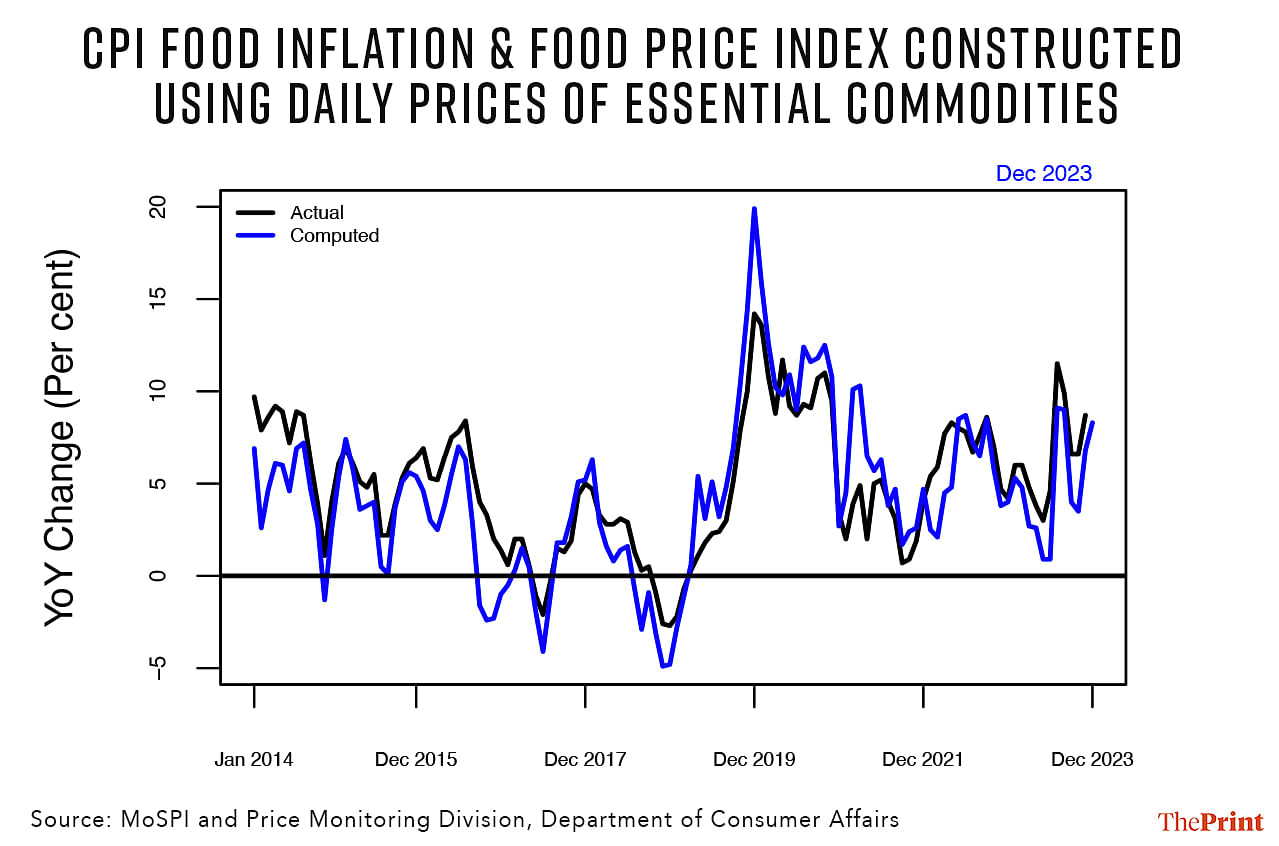
RBI will maintain its vigil on inflation
In its recent meeting, the RBI’s Monetary Policy Committee raised its projection on growth by 50 basis points but retained its inflation projection at 5.4 percent for the current year. Uncertainties in food prices and volatility in global crude oil prices continue to pose a risk to inflation outlook.
The Committee reiterated its commitment to monitor any signs of generalisation of food price pressures and to take appropriate action to achieve the 4 percent inflation target, which is still some distance away. The Committee now expects inflation to moderate to 4 percent only by the second quarter of next year.
Radhika Pandey is an associate professor and Pramod Sinha is a Fellow at the National Institute of Public Finance and Policy (NIPFP).
Views are personal
Also read: After causing some worry, manufacturing brings a pleasant surprise in Q2. But consumption a concern


